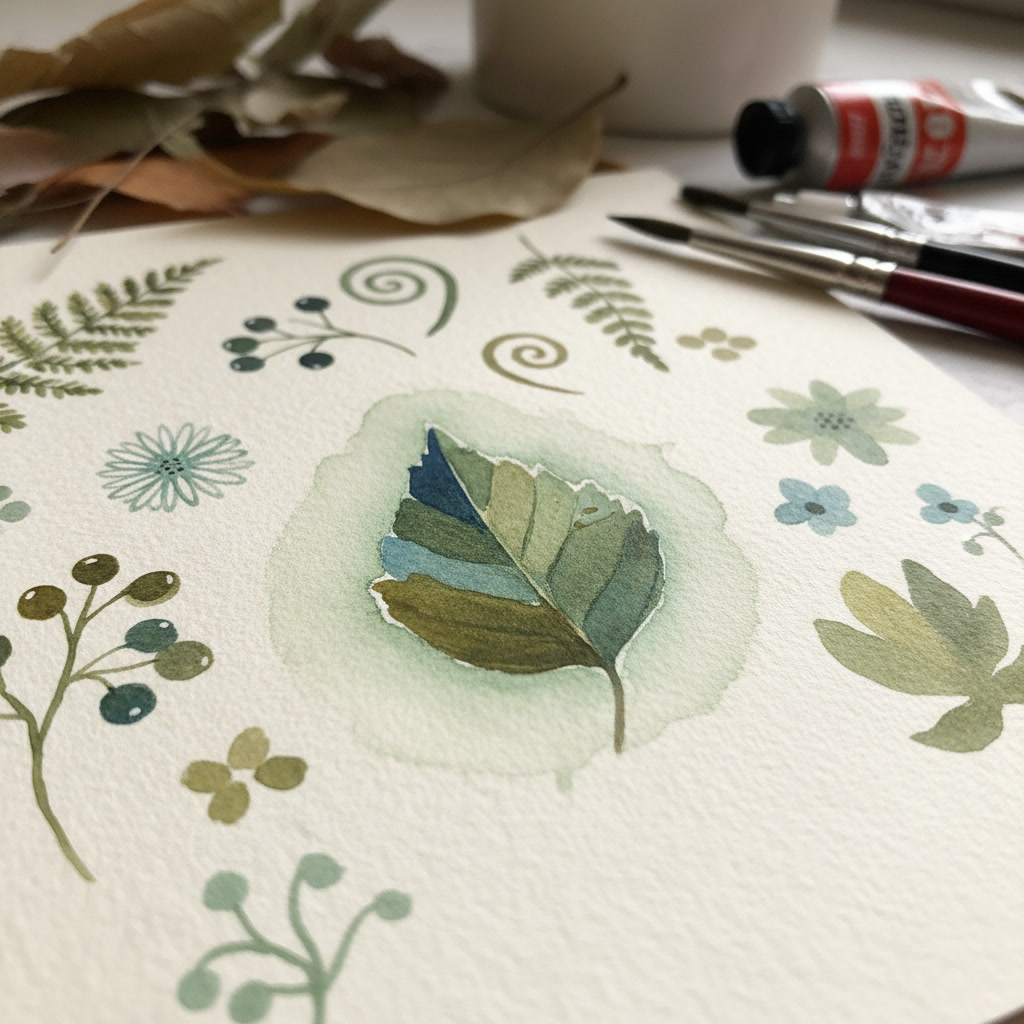Every studio has its rhythm.
Ours sounds like brushes tapping rinse jars, pencils whispering on tracing paper, and the occasional sigh from one of us as a motif finally feels right.
There's a tempo in the way we work — not slow out of hesitation, but slow out of respect. Because good design doesn't happen fast. It breathes.
When we talk about slow fabric, we're talking about more than production pace.
We're talking about a mindset — a way of being in relationship with our materials, our ideas, and our time.
The Quiet Rebellion of Slowness
In the speed economy, fast is praised as progress. But the faster the output, the thinner the soul of what's made.
Slow design isn't about inefficiency — it's about intimacy.
When you work slowly, you see.
You catch how pigment behaves differently on cotton than linen.
You learn which brush leaves the perfect bloom for a petal's edge.
You start listening to the subtle feedback of your tools.
For us, slow work is a conversation between the hand and the material.
Between what we intend and what the fabric teaches us back.
It's humbling — and that's what makes it art.


The Rhythm of a Studio That Refuses to Rush
We're six women sharing one long table.
Some mornings, no one talks — there's just the sound of drawing. Other days, we can't stop showing each other textures, prints, and misbehaving brushes. But one thing never changes: we give every design as long as it needs.
There's a point in every project when it wants to go faster — when the deadline looms or the idea gets over-polished. That's the moment we stop.
Because if it doesn't feel alive, it isn't ready.
We've scrapped entire collections because they were perfect — but lifeless.
We'd rather release one piece that breathes than ten that just exist.
That's what slow fabric means. You can see its heartbeat.
Fabric as a Living Material
People often ask us why we work with natural fibers even when synthetic blends are easier.
The truth? They age better.
A natural fabric develops character — the way linen softens, cotton lightens, and wool stretches to memory. It's a conversation over years, not days.
When we hand-paint or print onto fabric, we think about that future life — who will touch it, wash it, keep it, pass it on. That's what separates handmade textiles from fast-produced ones: the emotional patina that builds over time.
Good fabric grows up with you.


The Discipline Behind "Unrushed"
There's a misconception that slowness equals ease. It's the opposite.
Working slowly takes stamina. Focus. Restraint.
When you're deep in the rhythm of repetition — redrawing a leaf for the fifth time because the curve still doesn't breathe right — you realize that patience is a muscle.
Our process has checks built in:
- We take breaks from patterns and return days later to see them new.
- We test every palette on both screen and fabric.
- We give critique freely and receive it without ego.
It's not softness. It's devotion.
Why the World Needs Slow Makers
We live in a time when design can be generated in seconds.
But what's lost in that instant creation is human texture — the unseen hours, the pauses, the flawed brush marks that give work its pulse.
Slow makers remind the world that beauty and time are inseparable.
You can't fake the patience it takes to mix a color by hand or to layer a repeat until it flows effortlessly.
That invisible effort is what people feel when they see — or touch — a piece that's been made slowly.
In every workshop, every collection, we carry that same belief:
That fabric should tell you not just what it looks like — but who made it, and how they felt doing it.


Final Thoughts: The Future Is Slow
At Lily & Inc Studio, we're not anti-technology. We love what digital tools can do.
But we'll always begin with the human hand. Because fabric made without feeling might look beautiful — but it won't move you.
Slow fabric isn't nostalgia. It's the future we're choosing: one where we value process over production, and people over pace.
We'll keep choosing to move at the speed of care.
Because that's how good design lasts.
If you believe in slowing down too — in fabrics with soul and stories — we'd love to create with you.
Work with us

